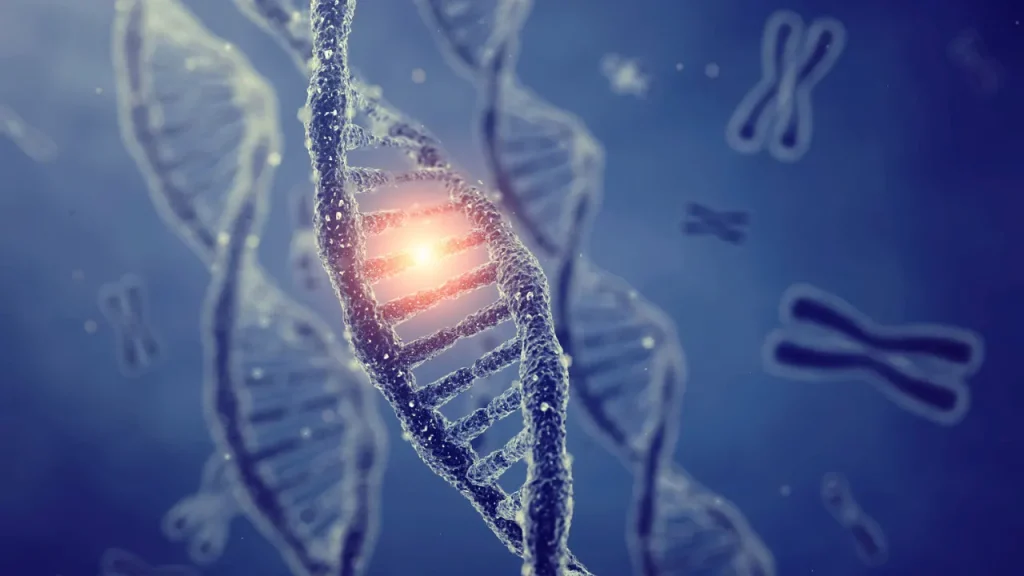Description
White matter within the spinal cord and brain is impacted by the demyelinating condition known as Balo Disease. As a result of the disease’s concentric sequence of demyelination, which distinguishes it from other demyelinating disorders like multiple sclerosis (MS), József Balo first identified it in 1928. Balo Disease is incredibly uncommon, accounting for a very small percentage of demyelinating illnesses identified globally. Despite its rarity, the condition’s intricacy and severity call for a thorough examination of its traits and available therapeutic alternatives.
Concentric regions of demyelination alternate with areas of undamaged myelin in Balo Disease, a form of inflammatory demyelinating illness. According to the location and degree of demyelination, this particular pattern might cause varied degrees of neurological damage. Common symptoms include cognitive impairment, visual abnormalities, motor and sensory impairments, and even mental issues. Due to the symptoms’ resemblance to those of other demyelinating illnesses, diagnosis is frequently difficult.
You May Also Like:
THE PROS’ SECRET TO OPTIMUM WORKOUTS: THE INFLAMMATION CLEANSE
Balo disease: Description, Causes, And Treatment Protocol is an original (HealthXWire) article.
Possible Causes
Balo concentric sclerosis, commonly known as Balo disease, has an etiology that is not well understood. Its cause is still unknown. The unique structure of concentric demyelination that characterizes this uncommon neurological condition affecting the spinal cord and brain poses special difficulties for both researchers and doctors. Several plausible causes have been put out based on studies and clinical findings, yet the exact cause hasn’t been identified with certainty yet. These potential origins of Balo disease comprise: –
- Viral Infections: Balo disease has been linked in certain studies to viral infections such varicella-zoster virus (VZV) and human herpesvirus 6 (HHV-6). It is thought that these viruses could cause an aberrant immune response that would demyelinate vulnerable people.
- Autoimmune Dysfunction: The autoimmune component of Balo disease is one of the prominent theories. In autoimmune illnesses, healthy tissues—in this instance, the myelin sheaths encasing nerve fibers within the central nervous system—are mistakenly attacked by the body’s immune response, which is meant to defend the body against foreign invaders. The unique concentric structures of demyelination identified with Balo disease may be caused by this inflammatory reaction.
- Genetic Predisposition: Balo Disease could be caused by genetic causes. Despite being uncommon, there have been a few instances of familial cases pointing to a potential hereditary connection. But further research is needed to fully understand the particular genetic processes generating Balo disease.
- Environmental Triggers: Environmental elements may play a role in the onset of Balo disease, including exposure to poisons or specific chemicals. But no particular environmental cause has ever been firmly recognized.
- Inflammatory Processes: One of the main contributing factors in the pathophysiology of Balo disease is inflammation. Immune cells, including T cells and macrophages, can invade the human central nervous system to start off a cycle of inflammation that harms the myelin sheaths.
- Autoantibodies: Certain autoantibodies that target myelin components have been linked to the occurrence of Balo disease, according to some research. These autoantibodies might be the outcome of an autoimmune reaction.
Blood-Brain Barrier Dysregulation: Immune cells along with inflammatory chemicals may enter the brain through a broken blood-brain barrier, which typically serves as a barrier to protect the brain from blood flow and to promote demyelination.

Exacerbating and Mitigating Factors
Balo disease, an unusual demyelinating illness, can be dramatically affected by aggravating and mitigating variables. For you and your healthcare provider to create efficient management plans and enhance overall results, these aspects must be identified. The main aggravating and mitigating factors related to Balo disease are as follows: –
Exacerbating Factors: –
- Stress: The immune system might suffer from long-term stress and emotional anguish, which can further worsen inflammation. In those with Balo disease, stress can cause illness relapses or exacerbate already present symptoms.
- Infections: An inflammatory reaction in the body can be brought on by bacterial or viral infections, potentially making the symptoms of Balo Disease worse. Immune system stimulation brought on by infections may worsen damage to the central nervous system’s myelin sheaths.
- Physical Trauma: Physical stress, including injuries to the head or accidents, may trigger tissue damage and inflammation, which could exacerbate demyelination and neurological impairments in those who are impacted.
- Insufficient or Postponed Treatment: Increased demyelination and perhaps irreparable brain damage might result from delayed diagnosis and treatment. To improve results, early detection, and immediate action are essential.
- Autoimmune Conditions: Balo Disease may be more likely to affect people with autoimmune disease histories. Other autoimmune disorders may be an indication of an immune system that is out of balance, which may speed up the disease’s development.
Mitigating Factors: –
- Avoidance of Triggers: The severity of symptoms may be lessened and disease relapses prevented by recognizing and avoiding aggravating factors like infections or stressful conditions.
- Standard Treatment Plan: Implementing the recommended course of treatment, which frequently consists of corticosteroids and immunomodulatory drugs, can help reduce inflammation and relieve symptoms. Taking prescription drugs as directed can help the condition progress more favorably.
- Lifestyle Modifications: People with Balo disease can benefit from living a healthy lifestyle in terms of their general health. This entails regular exercise, a healthy diet, and techniques for managing stress to lessen the effects of aggravating factors.
- Supportive Therapies: Developing strong muscles, mobility, and independent functioning can be facilitated by physical and occupational therapy. The standard of life for those with Balo disease can be enhanced by these supportive interventions.
- Early Identification and Intervention: The management of Balo disease depends critically on early diagnosis and the start of treatment. Early disease detection enables prompt therapeutic intervention implementation, perhaps delaying disease progression and reducing neurological impairments.
- Close Monitoring: The progression of the condition must be closely monitored, along with regular medical checkups. In order to properly manage Balo disease, the treatment strategy must be modified according to the patient’s reaction to therapy and the disease’s activity.


Standard Treatment Protocol
- The management of Balo disease symptoms, halting the growth of demyelination, and avoiding relapses are the main goals of treatment. Utilizing immunomodulatory drugs to stifle immune system reactions and lessen inflammation is part of the conventional therapy strategy. The inclusion of physical and occupational therapy can assist patients to preserve their mobility and enhance their overall standard of life. The majority of the usual treatment procedure comprises the following: –
- Corticosteroids: During acute exacerbations, corticosteroids like prednisone and methylprednisolone are frequently administered. These drugs aid in symptom relief and inflammation reduction, which promotes quicker recovery and shorter relapse times.
- Immunosuppressants: It may be possible to lessen the severity and frequency of relapses by using immune system-suppressing drugs like rituximab, azathioprine, or mycophenolate mofetil. The immune system’s assault on the myelin sheaths is halted by these medications, which also improve the disease’s progression.
- Plasma Exchange (Plasmapheresis): In a plasma exchange process, blood is drawn from the patient, the plasma carrying potentially dangerous antibodies is isolated, and the plasma is then either exchanged with donor plasma or another substance. This medication seeks to get rid of autoantibodies that might cause the illness while also helping to temporarily control symptoms.
Treatment Options
In conjunction with the traditional course of treatment, there are a number of adjunctive treatments that could be taken into account to supplement regular medications and possibly enhance the overall treatment of Balo disease. These alternative treatments include: –
Nutritional Supplements: These include: –
- Vitamin D
The benefits of vitamin D in promoting the health of the neurological system and controlling immunological response have been demonstrated. According to certain research, vitamin D intake may protect myelin and maybe lessen the severity of demyelinating illnesses.
- Omega-3 Fatty Acids
Fish oil contains omega-3 fatty acids, which have anti-inflammatory characteristics and may help to lessen inflammation within the body’s central nervous system.
Herbal Remedies: These include: –
- Ginkgo Biloba
For its possible neuroprotective properties, ginkgo biloba has been studied as a natural medicine. It might increase cerebral blood flow and have antioxidant qualities.
- Turmeric (Curcumin)
The main ingredient in turmeric, curcumin, has shown anti-inflammatory and antioxidant capabilities. It might assist in easing pain and supporting the nerve system.
- Green Tea Extract
Epigallocatechin gallate (EGCG), a polyphenol found in green tea, contains anti-inflammatory and antioxidant characteristics that may be helpful in treating neuroinflammatory disorders.
Physical Exercise and Mindfulness Practices: These include: –
- Physical Exercise
Regular exercise can help preserve muscle strength and general health when it is appropriate for the person’s condition. Yoga and meditation are mindfulness practices that can help reduce stress and enhance mental wellness.


Mindfulness Techniques
Yoga and meditation are two mindfulness techniques that can help you manage stress and enhance your mental health. Reducing stress may improve overall health and the management of diseases.
However, before including adjunct therapies in their treatment plans, people with Balo illness must first discuss their use with their medical professionals.
The advice and observation by a medical professional is extremely encouraged to verify the safety and effectiveness of herbal treatments and supplements in each unique situation because some of them might interact with prescription pharmaceuticals or have contraindications.
Conclusion
Though it is rare, Balo disease has spurred intensive research into its elusive origins. Viral infections, autoimmune dysfunction, genetic predisposition, and inflammatory processes are among the potential causes being explored. While the complexities of Balo Disease demand a holistic approach to diagnosis and treatment, the identification of exacerbating and mitigating factors, along with the implementation of a comprehensive treatment protocol, offer a promising path towards managing its symptoms and minimizing its impact. As medical knowledge continues to progress, a multidisciplinary approach encompassing conventional therapies, adjunctive treatments, and personalized medical supervision with your healthcare professional will be essential in enhancing the quality of life for if you either have or are likely to contract Balo disease.


Additional resources for further reference
- https://rarediseases.org/rare-diseases/balo-disease/
- https://www.news-medical.net/health/What-is-Baloe28099s-Disease.aspx
- https://autoimmune.org/disease-information/balo-disease/
Important Note: The information contained in this article is for general informational purposes only, and should not be construed as health or medical advice, nor is it intended to diagnose, prevent, treat, or cure any disease or health condition. Before embarking on any diet, fitness regimen, or program of nutritional supplementation, it is advisable to consult your healthcare professional in order to determine its safety and probable efficacy in terms of your individual state of health.
Regarding Nutritional Supplements Or Other Non-Prescription Health Products: If any nutritional supplements or other non-prescription health products are mentioned in the foregoing article, any claims or statements made about them have not been evaluated by the U.S. Food and Drug Administration, and such nutritional supplements or other health products are not intended to diagnose, treat, cure, or prevent any disease.
Table of Contents


